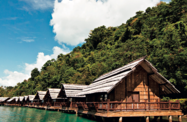Manila is looking to launch a new strategic plan to maximise the country’s tourism potential, raising the sector’s profile internationally while boosting employment and investments in key infrastructure and facilities to improve service provision. However, even if the plan is successfully implemented, the Philippines will still have a long way to claim a greater share of regional hospitality sector.
Tourism is already a major industry in the Philippines, with the World Travel and Tourism Council (WTTC) predicting the sector will directly account for 3.4% of GDP this year, while its total contribution, including the flow on through services, materials and sales, will be 11.4%.
Just as importantly for a government seeking ways of reducing the unemployment rate, which is currently running at more than 7%, the most recent WTTC report forecasts that the travel and tourism industry will create more than 1m jobs over the next decade, lifting employment levels from the present 4.4m to 5.6m by 2021, 12.3% of the national total.
In 2010, the Philippines hosted 3.5m foreign visitors, a total it hopes will increase to 6m annually within next five years. In late April, the secretary of the Department of Tourism, Alberto Lim, said this target will be achieved in part due to a liberalisation of civil aviation policy that allows more overseas carriers access to international routes, the addition of almost 10,000 hotel rooms over the next three years and the expansion of training programmes for workers in the hospitality industry.
However, beyond these steps the government is pinning its hopes on the soon-to-be released National Tourism Development Plan (NTDP), which is to establish policies and identify programmes that will make tourism a driving force in the economy through promoting local, regional and national development. The strategy, which is to cover a five-year term, will also identify the resources needed to achieve these goals and address issues such as planning and product development, investment and human resources management.
After some six months of planning, including extensive consultations at the regional level, the NTDP is expected to be launched in June, though an exact date has yet to be fixed. While the final release date has not been set, some details of the NTDP have surfaced in the local media, including reports that the Department of Tourism (DoT) has confirmed the US, South Korea and Japan as the Philippines leading tourism markets, and that India and Russia are the emerging markets that have been identified as holding the most potential for the medium term.
The NTDP is more than just a framework for the industry; it is also a roadmap to a future to where the tourism sector is fully integrated with the national economy. Under the NTDP, numerous government agencies will work closely together to put in place the infrastructure needed to develop the tourism industry. Among them will be the Department of Transportation and Communication and the Department of Public Works and Highways, which will be called upon to provide improved travel links via road, rail, air and water throughout the country.
However, it is one thing to have a development plan and quite another to achieve tangible results. Though the NTDP will provide a blueprint for tourism over the next five years, the government of President Benigno S Aquino III has much work to do to broaden the base of the national economy and only limited resources to make that happen. While the DoT was allocated $34.6m in the 2011 budget, with two-thirds of this to be spent on promotional activity, this funding has to be divided between numerous markets overseas as well as pay for activities at home.
The Philippines has some stiff competition in the region, surrounded as it is by some of Asia’s leading tourism destinations. Malaysia, Thailand and Singapore all have strong track records when it comes to attracting overseas visitors, with Malaysia recording more than 24m foreign arrivals in 2010, Thailand 15.8m and Singapore 11.6m. Put into context, the DoT’s target of 6m foreign tourists by 2016 is a modest one.
While the 2011 budget allocation was an increase on that of previous years, it is a far cry from the $175m given to the Tourism Authority of Thailand for 2011 and is an indication of how far the Philippines will need to ramp up its efforts to compete in what remains a highly competitive regional market.
While the new NTDP may help the tourism industry to raise its profile and improve its services, that improvement will take time, and substantial investment, before solid results will be seen.

